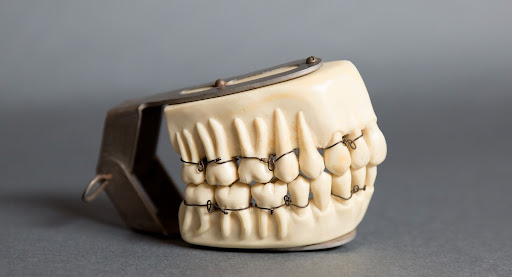Ancient History
Interest in orthodontics can be traced all the way back to ancient civilizations over 3000 years ago!
As early as 400-300 BC, Greek philosophers like Hippocrates and Aristotle were already exploring ways in which tooth position could be improved. Ancient Egyptian, Roman, and Etruscan tombs have revealed people of importance, such as Cleopatra, being buried with wires secured to their teeth to keep them in place in the afterlife. Similar discoveries have found mummified remains with metal bands and Catgut (a flexible fiber derived from animal intestine) assumingly in the process of aligning teeth at the time of death.
Around the first century, a Roman physician and writer named Aulus Cornelius Celsus created the first written record of an orthodontic treatment concept. He said, “If a second tooth should happen to grow in children before the first has fallen out, that which ought to be shed is to be drawn out and the new one daily pushed toward its place by means of the finger until it arrives at its just proportion.”
Middle Ages – Enlightenment
Although the Middle Ages produced little progression in dentistry, France led dental and orthodontic research after the Renaissance. French universities accommodated students interested in learning dentistry as early as 1580.
The enlightenment saw great progression in dental science and medicine, along with many other studies. Clinical pursuit of orthodontics as a specialty began in earnest.
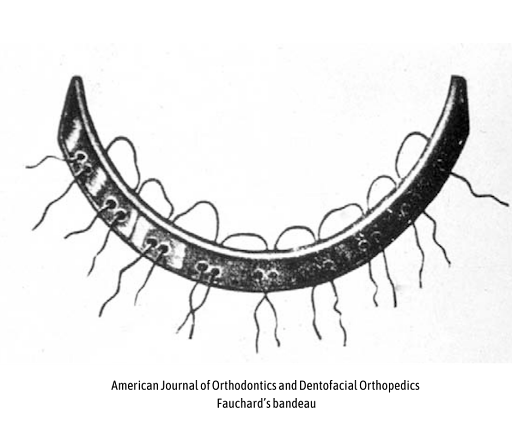
French dentist, Pierre Fauchard, is responsible for the invention of the general concepts of orthodontics used today. He outlines these concepts in his book titled, The Surgical Dentist, published in 1669. One of his first appliances was a u-shaped piece of iron called “the Bandeau” placed in the mouth to expand the palate and make room for more teeth. He used swelling threads or wooden wedges to separate crowding.
In 1692 Matthaeus Gottfried Purmann reported taking dental impressions using wax for the first time.
In 1754, the King of France’s own, Dr. Louis Bourdet, used Fauchard’s appliance and also became the first to recommend extraction to further reduce crowding.
Around the turn of the 18th century, French surgeon and anatomist, Pierre Dionis was the first to mention the exclusive practice of dentistry as a distinct field. He mentioned dentists, or “operators for the teeth,” could “open or widen the teeth when they are set too close together.”
During this time, the term “malocclusion” didn’t exist. They were called “irregularities” of the teeth, and correcting them was deemed “regulating.”
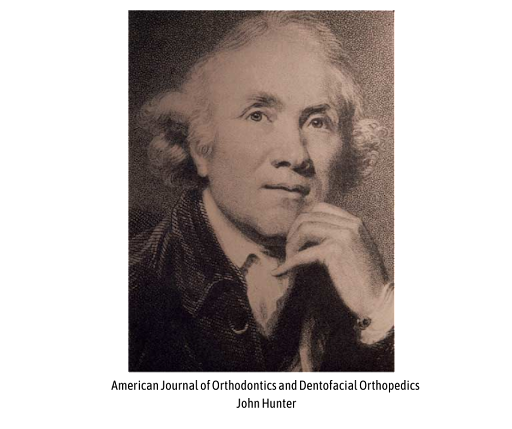
Between 1728 – 1793 John Hunter made great strides in the general understanding of the anatomy of the teeth, palate, and jaw bones. His text,The Natural History of the Human Teeth was a scientific guide relaying the principles behind the relationship between teeth, bite, and jaw structure. His student Joseph Fox, took Hunter’s work a bit further. He classified malocclusions, gave direct instructions on fixing irregular bites, and practiced the proper timing of treatment actions.
Many tools, appliances, and machines were designed to broaden possibilities and enhance results.
Dr. Christoph-Francios Delebarre’s innovation in 1819 birthed a critical prototype of modern-day braces called “wire cribs.”
A method conceived and started by Edward Maynar and improved upon by E.J. Tucker used gum elastics to pull on and correct jaw alignment.
Henry A. Baker combined the technology of “wire cribs” and elastics to align teeth and greatly reduce the number of required extractions.
Further dental literature dedicated to explaining orthodontic methods began to emerge as well
Joachim Lefoulon, from France, has the great distinction of coining the term orthodontosie. The term, created in 1841, roughly translates into orthodontia, finally giving orthodontics a proper, scientific name.
In 1858, famous multi-talented Dr. Norman William Kingsly wrote his first article on orthodontics. 22 years later he followed it up with his own book, Treatise on Oral Deformities.
The writings A Treatise on the Irregularities of the Teeth and Their Corrections of dentist John Nutting Farrar were instrumental in ortho development. He was the first with the concept to use mild, incremental forces to gradually move teeth into alignment.
In 1884, Eugene S. Talbot incorporated x-ray imaging into his orthodontic exams. This was a great addition as it unveiled teeth under the surface that have the potential for causing problems with alignment. Taking early steps to remove or plan for such teeth made the process much more efficient.
The 20th century brought with it a very important figure in the world of dentistry. Dr. Edward Angle, also known as the father of modern orthodontics, brought structure and organization to the specialty of orthodontics. Before the 1830s there was no dental degree at all. General physicians or even barbers took care of oral problems. Angle founded the first college of its kind, Angle School of Orthodontia, in 1899. Enrolled students furthered their education into the field of orthodontics over 3- 6 weeks. By comparing the current 2-3 years of today’s ortho specialty programs, you can begin to gather how much the field has grown since then. In 1901 Angle established what would eventually become the American Association of Orthodontics. Six years later, he headed production of the first Orthodontic Journal. Angle contributed heavily to the developments in new dental and orthodontic devices and technology. One of his greatest impacts on the field was his invention of a classification system encompassing all the different variations of tooth and jaw alignment. The Angle Classification system is still in use today.
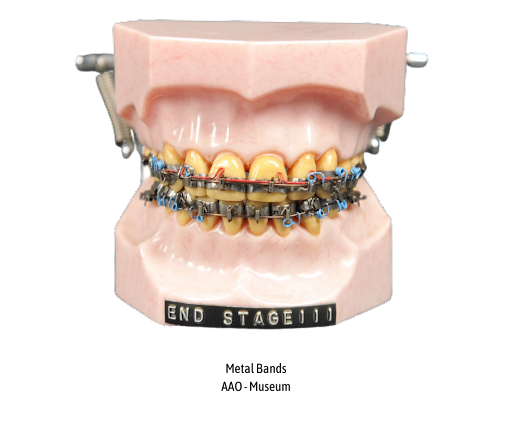
The term “braces” was coined 1900 due to the nature of securing metal bands tightly to teeth and to one another.
In the early 20th century, braces, although more in line with modern braces than ever, were a far cry from today’s sets. A band was placed around each individual tooth and connected to a wire. A huge breakthrough in the 1970s was using dental adhesive to stick brackets to each tooth and attaching an archwire with elastics. This revolutionized the concept and look of braces and the painstaking use of bands around each and every tooth was largely done away with.
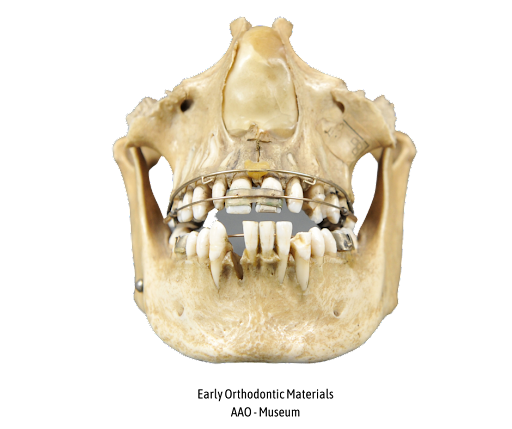
Before the 1960s materials of all sorts were used including wood, ivory, and precious metals like gold. Basically, whatever the dentist favored, and the patient could afford. Once stainless steel became available in the 1970s, it became the preferred material as it was easier and more affordable to work with. Today, orthodontic wires are an example of cutting-edge technology used by the public. Modern archwires for braces are developed using a NASA-designed flexible, often heat-activated, metal. The flexible and smart nature of this metal greatly improves the efficiency and efficacy of ortho treatment.
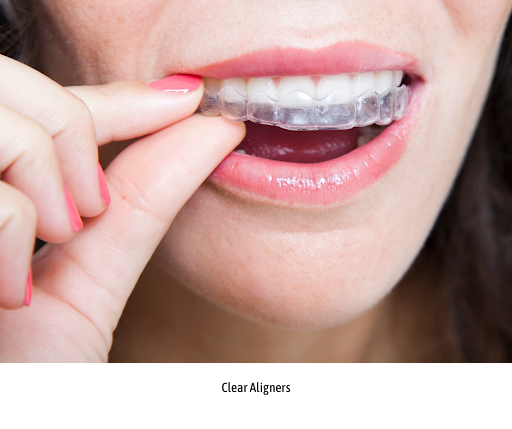
The peak of modern advancement in dentistry, however, began in 1990s with the invention of an entirely new approach to orthodontics. Two Stanford graduates with no dental background conceived an idea, inspired by a plastic retainer, to use clear plastic trays to gradually shift teeth into alignment. This would implement small incremental changes through a series of changeable clear plastic trays, a process they called “Invisalign.” This concept took the field by storm. The “Align” technology became available in 2000 and has only been improved upon in the last 20 years.
Now, through specialized algorithms and an orthodontist’s oversight, teeth can be moved into alignment more easily, comfortably, and subtly than ever before.
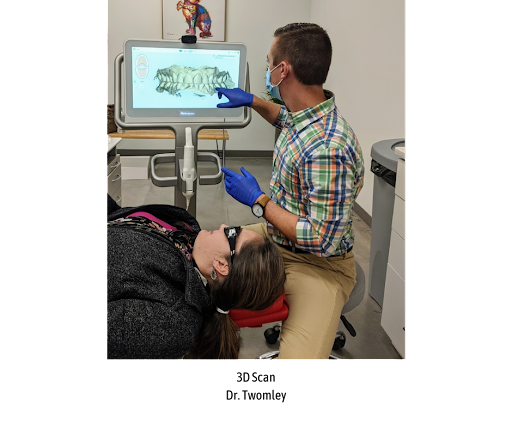
Computer technology, such as 3-D scanners, digital images, and cloud-based records have helped streamline the treatment process and make things easier for doctors and patients alike.
There are more options than ever when deciding to move forward with treatment. Special matte hardware, clear ceramic brackets, self-ligating (securing) brackets, fun-shaped brackets, subtle “invisible” braces,
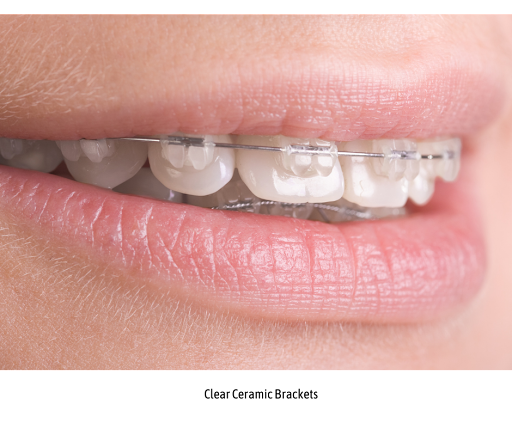
Regardless of which method you and your orthodontist choose to fit into your care plan, it’s fun and encouraging to see how far dentistry and the pursuit of orthodontics have come. It’s an honor to be a part of the advancement of the field of orthodontics. We love the various techniques, instruments, and puzzles involved in the ortho process. However, our favorite part is when we take it all off, revealing a beautifully straight, happy smile. Through that smile, we see, not only the results of two or so years in our office but the efforts of thousands of years of dedication towards making it a reality.

